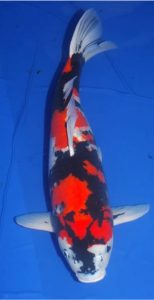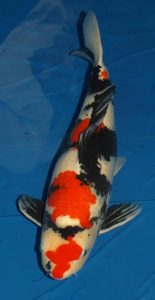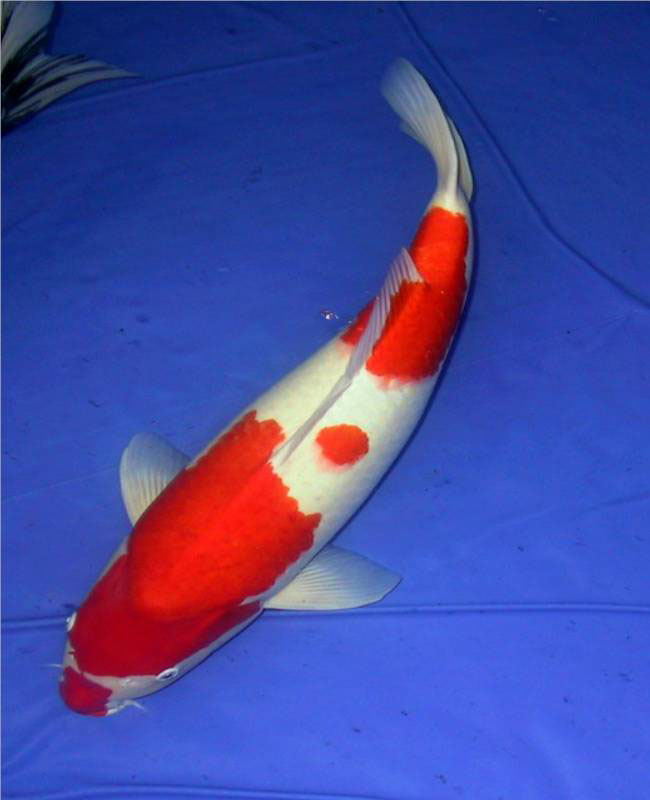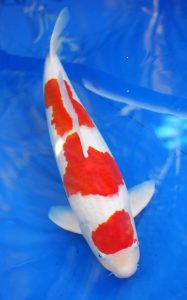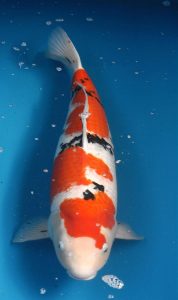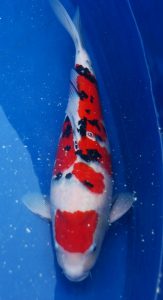Author Archives: Charlene Cebulski
2018 Calendar of Meetings
The new 2018 calendar for MPKS is posted. We have some great topics this year along with different meeting locations. February’s topic is how the weather effects our ponds and fish at a new location. Myron and Ellen Kloubec will talk about the effects of all this cold weather on our fish
In March we are doing our private group tour of the Chicago Flower Show. In April, Mike White will share his wisdom with us on bogs. May’s topic is all about Bee Keeping from one of our members. Of course, we have our Tosai auction May 19th and Spring auction June 2nd followed by the Koi Show and Trade Show in June.
We have the exciting pond tour in July and in August we visit the Koubec Koi Farm. The August meeting is different this year. The meeting will be held on Saturday morning and will be an outing to The Gardens at Ball.
Check out the calendar of events for the details on time, locations, and speaker information.
Hope to see you at a meeting!
Charlene Cebulski
2018 Election Results
2018 Election Results
The annual election for Officers and Board Directors was held at the October 19th club meeting.
The following MPKS members were elected to the position listed and will serve a two year term.
Vice President: Bob Passovoy
Treasurer: Sherry Messler
Directors: Bob Ray, Greg Rekar, and Ray Cebulski.
Congratulations!!
Come to the MPKS Picnic!
Our picnic is planned for Sunday, August 20th at Andrew Toman Grove, W. 27th & Des Plaines Avenue, Riverside. Our picnic site entrance is on Des Plaines.
The park is open from dawn to dusk and the property has a pavilion with picnic tables. We have a nice piece of park reserved, to accommodate games, or just relaxing with friends. Feel free to bring yard games.
Coolers are welcome!
This year we are grilling assorted sausages and we ask for side dishes and desserts or any other nibble you may wish to bring. Lunch will be served at 1:00 PM.
Please email by August 13th, if you plan to attend. We hope to see you there!
Road Trip to Kloubec Koi Farm
Road Trip to Kloubec Koi Farm
Myron and Ellen Kloubec have extended an invitation to MPKS to visit their facility on Saturday August 12th. The agenda for the day follows:
Saturday:
Check in at Noon, farm tour, koi purchasing and mud-pond grow out opportunity.
The dinner plans for Saturday evening is a 6:30 PM family style dinner at the Ox Yoke Inn located in Amana. The dinner cost is approx $23.00 per person. After dinner we head back to the Kloubec Farm for a bonfire and BYOB get-together.
Sunday:
A 9:00 AM brunch at the Cedar Ridge Winery, 1441 Marak Rd NW, Swisher IA, for $16.99. Any koi purchases may be picked up following the brunch.
The driving trip is about 3 to 3-1/2 hours from the Naperville/Lisle area. The Amana Colonies are close by for shops and restaurants.
For those who want to spend the night, there is a block of rooms at the County Inns & Suites at Cedar Rapids Airport. The hotel information is 9100 Atlantic Drive SW, Cedar Rapids, IA 52404, 319-363-3789. The block will be held until August 4th under Koi Fish Farm and the rate is $89 plus tax.
Please make your own hotel reservations.
Please RSVP if you plan on attending to ccebulski@comcast.net or call the MPKS voicemail (312) 409-2081 by Sunday August 6th. Also indicate if you are joining us for the dinner and/or brunch.
Hope you can join us!
Pictures of Koi Show Winners
June 23rd – 25th was the 25th Annual Koi Show and Trade Show for MPKS. Thank you to all who showed their beautiful Koi.
210 fish were benched and judged for the Koi Show.
Congratulations to the winning fish!
Alright, Why Should I Go To a Koi Show?
If you are reading this article, it means that you have clicked on its title on this site, which also means that you’ve got at least a passing interest in ponds, fish, plants and the hobby in general. Many of you may have goldfish, some of you may have koi, and all of you have questions.
Questions like: “What kind of fish is that?”
“Why is my water that funny color?”
“What is that smell?”
“Why are all my fish swimming upside down?”
“Where can I rent a bulldozer?”
If you’re a little better at the hobby than that, questions about equipment upgrades, water testing, pond chemicals, fish health and access to better quality fish are more likely to be on your mind. A good-sized koi and goldfish show is the ideal place to go to find answers to all of these and more. They are gatherings of the most knowledgeable hobbyists in the area, who are there to exhibit the best fish in their ponds and compete for prizes. Also in attendance will be a wide variety of vendors, who provide services, equipment and livestock for the hobby. Shows will frequently sponsor seminars and speakers on a wide variety of topics which are open to all attendees.
What is even better, almost everybody present is, in one way or another, an enthusiast, and more than happy to share experiences, solutions, disasters and help at the drop of a question. It is incredibly easy to get a water gardener talking. The hard part is getting them to shut up. Ask a question; present a problem, within an hour you’ll have twenty suggestions and solutions. They may not all work for you, but every one of them has, at one time or another, worked for someone.
Koi shows are noisy, sometimes chaotic, invariably wet, and always fascinating fun. Come join us!
Bob Passovoy
President
MPKS
The Midwest Pond and Koi Society sponsors a Judged Koi Show and Pond Trade Show (June 24-26, 2016) at the MAX in McCook, IL. See their website, www.mpks.org, for more details.
Brief bio: Bob Passovoy stumbled innocently into ponding twenty-three years ago when his wife decided she wanted a water lily. He now operates a 4400 gallon koi pond with 28 koi, a 550 gallon swamp with fancy goldfish, a filtration system that’ll give you nightmares, and (because he left the room at the wrong time), the largest water gardening club in the Midwest.
Poisonous Plants
We’re not saying you shouldn’t plant these; just consider their placement carefully.
| Bushes and Trees | Toxic parts |
| Daphne mezereum | berries |
| Ginko | fruit |
| Laburnum anagyorides | pods and seeds |
| Privet | berries and leaves |
| Prunus (peaches, apricots, plums, cherries) | pits |
| Rhododendron | all parts |
| Taxus (yew) | seeds, needles, branches |
| Viburnum opulus (snowball bush) | berries |
|
|
|
| Vines | Toxic parts |
| Aristolochia durior (Dutchman’s Pipe) | all parts |
| Wisteria sinensis, W. floribunda | leaves and berries |
|
|
|
| Perennials | Toxic parts |
| Aconitum (Monkshood) | all parts |
| Arum maculatum (Wake Robin) A. italicum | berries |
| Brugmansia/Datura stramonia (Angel’s Trumpet) | all parts |
| Colchicum autumnale (Autumn Crocus) | all parts |
| Convollaria majalis (Lily of the Valley) | all parts (including water the flowers have been kept in) |
| Daffodil, Narcissus, Jonquil | all parts |
| Delphinium (Larkspur) | all parts |
| Digitalis purpurea (Foxglove) | foliage and seeds |
| Euphorbia (Snow on the Mountain) | sap |
| Hedera helix (English Ivy) | berries |
| Helleborus Niger (Christmas Rose) | all parts |
| Hyacinthus | bulbs |
| Lantana camara | unripe fruit |
| Milkweed | sap |
| Polygonatum (Solomon’s Seal) | same as Lily of the Valley |
| Rincinus communis (Castor Bean Plant) | seeds |
|
|
|
| The Nightshades | Poison: solamine |
| Atropa belladonna (Belladonna) | berries |
| Lycopersicon lycopersicum (tomato) | green fruit (if eaten in quantity) |
| Solanum dulcamara (Bittersweet) | unripe berries |
| Solanum nigrum (deadly nightshade) | berries |
| Solanum tuberosum (potato) | all parts but tubers; tubers if green |
|
|
|
More — by family
(drawn from the Thompson & Morgan Seed Catalog)
| Apocynaceae: Catharanthus (Periwinkle) Vinca Asclepiadaceae: (Milkweeds)Berberidaceae: Berberis (Barberry) Podophylum Boraginaceae: Echium –also attracts bees, if anyone’s allergic Campanulaceae: Caryophyllaceae: Cornaceae: Compositae: Crassulaceae: Convolvulaceae: |
Ericaceae: Kalmia Euphorbiaceae: Euphorbia (Spurge) Ricinus (Castor Oil Plant) Plumeria – Frangipani Leguminosae: Caesalpina ( Bird of ParadiseFlower) Cytisus (Broom) Lathyrus (Everlasting Pea) Lupin (Lupine) Robinia Sweet Peas Ulex (Gorse) Wisteria Liliaceae: Convollaria (Lily of the Valley) Fritillaria Gloriosa Lilium Polygonatum (Solomon’s Seal) Linaceae: Papaveraceae: |
Primulaceae: Cyclamen Ranunculaceae: Adonis (Pheasant’s eye) Anemone (Wind Flower) Aquilegia (Columbine) Caltha palustris (Marsh Marigold) Clematis Delphinium Helleborus (Christmas Rose) Larkspur Pulsatilla (Pasque Flower) Ranunculus Thalictrum Rosaceae: Chaenomeles japonica (Quince) Solinaceae: Datura (Angel’s Trumpet) Nicandra (Shoo Fly Plant) Nicotiana (Flowering Tobacco) Solanum (Winter Cherry) Scrophulariaceae: Digitalis (Foxglove) Linaria (Toad Flax) Verbenaceae: |
Showa – The King of Nishikigoi by Bryan Bateman
If you like the look of power and grace working in unison, then Showa might be the fish you are looking for, with its bold, wrapping black markings that complement the colors of red and white to create a dynamic panorama in three colors. Showa is considered one of the “big three” along with Kohaku and Sanke, and at most koi shows, one of these varieties will usually win Grand Champion.
A Showa can be recognized by any of several easily identifiable characteristics. As already mentioned, three colors must be present, but it is the placement of these colors that sets the Showa apart from other three-colored fish. Black should appear somewhere on all parts of the body – the head, trunk, and caudal (or tail) section. This black should appear as large wrapping bands or bold patches, sometimes connecting with each other.
A Showa should begin (somewhere near the nose) and end (somewhere near, but not into, the caudal fin) with black. Black also normally appears at the base of each pectoral fin as an added enhancement. The red should appear much as a kohaku pattern, that is, in artistic but simple patterns throughout the body. A normal ratio of the three colors is 1/3 of each, but variations from this are acceptable, and are largely a matter of personal preference.
Selecting a young Showa can be a tricky proposition. This is because the black doesn’t usually appear fully until 3 or 4 years of age. To complicate matters further, if a baby showa has black that appears “complete”, it may very well disappear, and reappear years later in totally different locations!
For this reason, it is best to select a showa with an attractive kohaku (red and white) pattern, but with hints of black to come, which will appear as bluish shadows beneath the skin.
A more recent development in the Showa variety is known as “Kindai”, or modern, Showa. This type of Showa is more delicate in appearance, with more white than red or black, and with the black and red appearing in distinctly different locations from each other rather than overlapping as on traditional Showa.
Whichever type of Showa you like, you should have at least one of these in your collection. With loving care and a little bit of luck, it may well become the King of your pond.
© Bryan Bateman 2009
Kohaku – The Queen of Koi by Bryan Bateman
If Showa can be called the King of Koi, then Kohaku certainly wears the Queen’s crown. This red and white beauty is one of the “big three” in koi shows, along with Showa and Sanke, which are both three-colored koi.
An old adage goes something like “The road to nishikigoi begins and ends with kohaku”. This refers to the attraction that the simple beauty of red on white has to the beginner, and to the many intricacies and challenges that this variety presents to the advanced hobbyist. Indeed, the first koi many of us see is a kohaku, to which we inevitably respond: “My what a pretty goldfish!”. Not until we buy it, take it home, and watch as it grows. . and grows. . . and grows. . . do we finally realize that this is no ordinary “goldfish”. The road to Nishikigoi has begun.
Later, when many of us take to showing koi, and have collected examples of our favorite varieties, we begin to search for that “special” kohaku. We learn that there are certain rules that need to be followed when it comes to a kohaku pattern. For instance, we don’t want the head covered in red and we prefer not to have red in the fins. Ideally the red comes to just past the eyes, leaving the rest of the head down to the mouth in white. An attractive exception to this rule is “kuchibeni”, or “red lipstick”, which is self-explanatory.
Also, the pattern should be bold rather than spotty, and it should wrap down to the midline or lateral line, giving the koi a powerful look. The classic pattern is a three-step pattern, which would have one red marking on the shoulder area, a large marking at the middle section, and a smaller red mark just before the tail. Similar to the “head” rule, the tail should also end in white. This is called a “tail stop” and refers to the last red marking stopping about ½ inch from the beginning of the tail fin.
Another popular pattern is the lightening, or inazuma, pattern. This is a single red marking zig-zagging down the entire length of the koi. Balance of the pattern is important also. It should look pleasing to the eye – not too heavy on one side or the other. Finally, the edging of the red, known as “kiwa”, should be sharp and clean. A blur at the leading edge (towards the head) is OK if it is only one scale wide. All of this red should sit on a canvas of pure porcelain-like white.
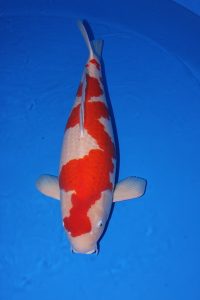
All-Japan Kohaku with an Imazuma (Lightning) pattern
Next time you are visiting a trade show or a koi dealer, take the time to study the kohakus. Bowl five or six of them up – study patterns. Study body shapes. Study color and skin quality. Maybe you’ll spot a “special” kohaku that will take you a little further down the road that is Nishikigoi.
© Bryan Bateman 2009
Sanke – The Elegant Koi by Bryan Bateman
We have previously discussed Kohaku and Showa. We now introduce Sanke, the third of the group of koi known as “Gosanke”. These three varieties traditionally win most major awards at koi shows.
In most cases a Sanke can be easily recognized by the characteristic kohaku pattern (red patterning on a white fish) accented with black markings scattered about the body much like stepping stones. As with many varieties, there are a few “rules” which should be followed. One of these is that the head should be free of any black markings. Another is that the pectoral fins should have “tejima”, or thin black stripes, extending from the pectoral joint to about one-half the length of the fin. Other than these two rules, it becomes much a matter of personal taste as to the location, size, and number of black markings.
In judging Sanke, a judge will consider the overall balance of the red and white markings – how well they compliment each other. If the black markings are concentrated in one area, such as near the tail, or all on one side, it creates an un-balanced and busy look. There should be a “focal point” on a Sanke, which would be a fairly large black marking on one shoulder. This is important enough to have its own name: “Kata Sumi”. Another appreciation point is that the black markings should be located on the white rather than on the red. This creates a more elegant and refined impression.
In selecting young Sanke, in addition to the standard checklist of good health, solid body structure, and good skin quality, you should look for a pleasing kohaku pattern. A two- or three- step pattern tends to look very nice on a Sanke because there will be several white areas upon which the black stepping stones will hopefully appear. As with most varieties exhibiting black coloration, we cannot predict for sure where these markings will be. This is one challenge of selecting a baby Sanke. Most will have black markings as Tosai (one-year-olds), but these will frequently fade away to be replaced by permanent markings by the third year or fourth year. In general, the permanent black markings will be at approximately the same locations as the “baby black”, but you can also look closely for faint gray markings, which will emerge later as normal black.
© Bryan Bateman 2009

